
The Art of Ancient Russia is a unique blend of pagan traditions of Eastern Slavs and Byzantine influence on the local culture
The art of Ancient Russia represents an important part of the cultural heritage of all Eastern Slavic peoples. Numerous works of Ancient Russian art are the result of the creativity of a vast number of artists who lived in the territories of modern Ukraine, Belarus, and Russia from the 9th to the early 13th centuries. Unfortunately, only a small number of works by ancient masters have survived to our day.
 The Art of Ancient Russia. Novgorod icon of the Spas Nerukotvornyi, 12th century
The Art of Ancient Russia. Novgorod icon of the Spas Nerukotvornyi, 12th century
The art of Ancient Russia combines the traditions of several neighboring cultures. In addition to Slavic roots, it clearly reflects the influence of Balkan and Byzantine masters who lived in the territory of the ancient Rus state for several centuries.
 The Art of Ancient Russia. Temporal rings of the Vyatichi, 12th century
The Art of Ancient Russia. Temporal rings of the Vyatichi, 12th century
Key Periods of Ancient Russian Art
The art of Ancient Russia developed over four hundred years, from the period of the creation of a powerful centralized state in the mid-9th century to the Mongol-Tatar invasion at the end of the first third of the 13th century. During this time, significant changes occurred not only in the political but also in the cultural life of the Eastern Slavs.
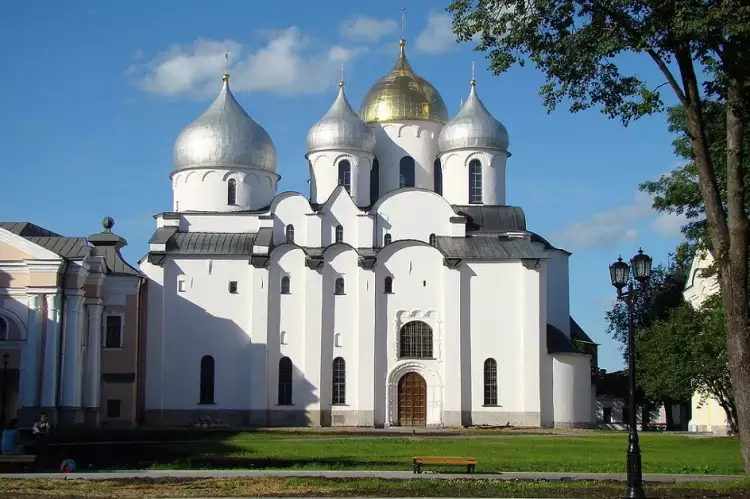 The Art of Ancient Russia. St Sophia Cathedral in Novgorod, 11th century
The Art of Ancient Russia. St Sophia Cathedral in Novgorod, 11th century
Modern historians typically divide Ancient Russian art into two main periods: pre-Christian and Christian. The pre-Christian period lasted just over a century, from the formation of Kievan Rus under the leadership of the first recorded prince, Rurik, to the official adoption of Christianity in 988. During this time, ancient local cultural traditions predominated in the art, shaped over many centuries based on the pagan beliefs of Eastern Slavic tribes.
 The Art of Ancient Russia. Golden Gate in Kiev (modern reconstruction), 11th century
The Art of Ancient Russia. Golden Gate in Kiev (modern reconstruction), 11th century
After the Christianization of Rus by Vladimir, the Christian period of the state's history began, marked by the introduction of new cultural traditions into all areas of art. During the peak of the ancient Rus principality, not only Christian missionaries but also numerous masters from various parts of the Byzantine Empire, including its capital, Constantinople, as well as Greek and Anatolian lands, flocked to the region.
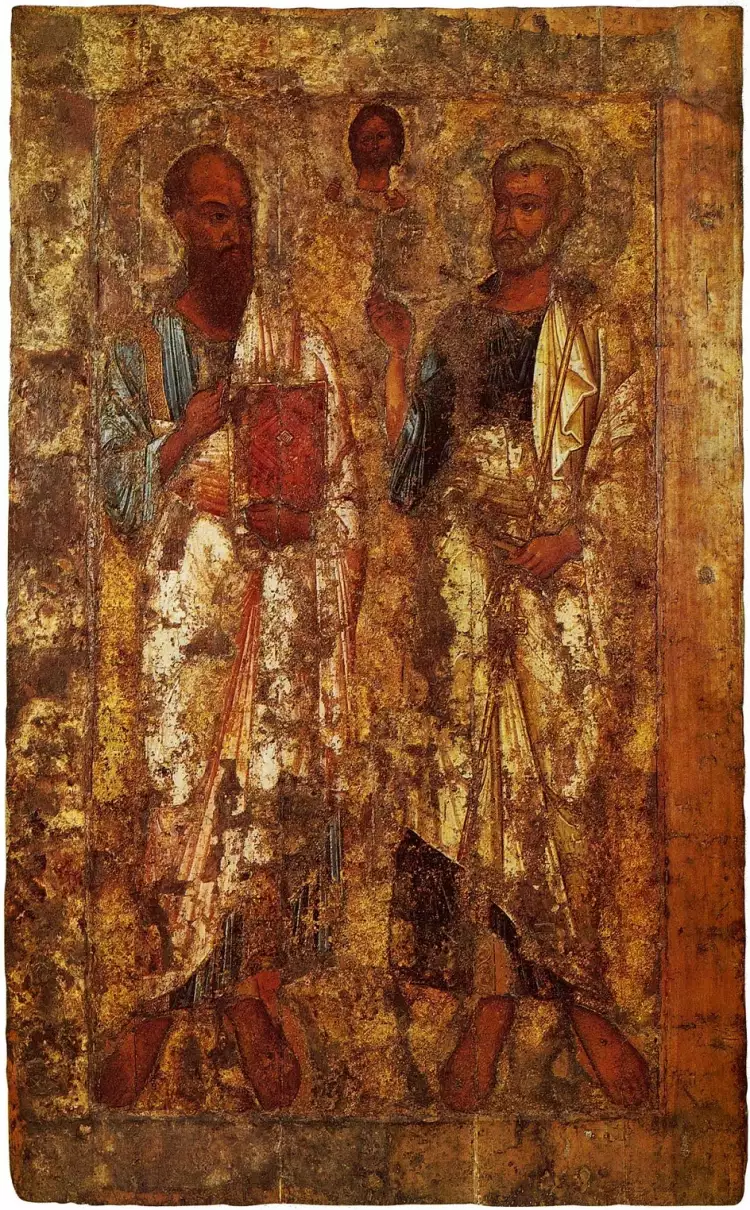 The Art of Ancient Russia. Icon of Saints Peter and Paul, 11th century
The Art of Ancient Russia. Icon of Saints Peter and Paul, 11th century
Features of Ancient Russian Art
Ancient Russian art primarily encompasses masterpieces created by skilled artists and craftsmen in the following areas:
- Architecture.
- Sculpture.
- Iconography.
- Fresco painting.
- Mosaics.
- Book illumination.
- Jewelry craftsmanship.
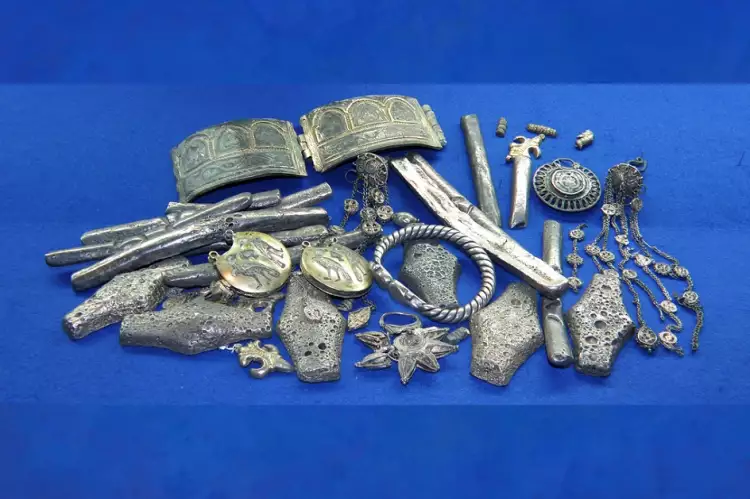 The Art of Ancient Russia. Jewellery from the Vyshchinsky hoard, early 13th century
The Art of Ancient Russia. Jewellery from the Vyshchinsky hoard, early 13th century
In addition to this, unique items of various decorative and applied arts (embroidery, weaving, stone carving, metalwork, weaving, and ceramics) hold significant historical value.
The architecture of Ancient Russia from the pre-Christian period to the present day has hardly survived as all buildings in those times were constructed from wood. Stone architecture only emerged with the adoption of Christianity. Historians recognize the Desyatinnaya Church in Kiev, built by invited masters from Byzantium, as the first historical building constructed from stone.
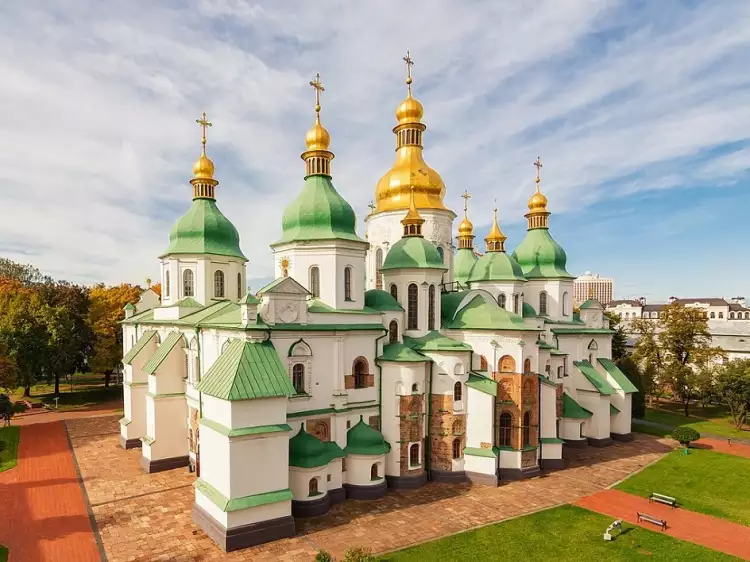 The Art of Ancient Russia. St Sophia Cathedral in Kiev, 11th century
The Art of Ancient Russia. St Sophia Cathedral in Kiev, 11th century
Over the next two centuries, a significant number of stone churches were built in the Rus' territories, including globally renowned architectural masterpieces such as:
- St. Sophia Cathedral, the Golden Gate, and the Kiev Pechersk Lavra complex in Kiev.
- St. Sophia Cathedral in Novgorod the Great.
- Assumption Cathedral in Vladimir.
- Nativity Cathedral in Suzdal.
- Transfiguration Cathedral in Chernihiv.
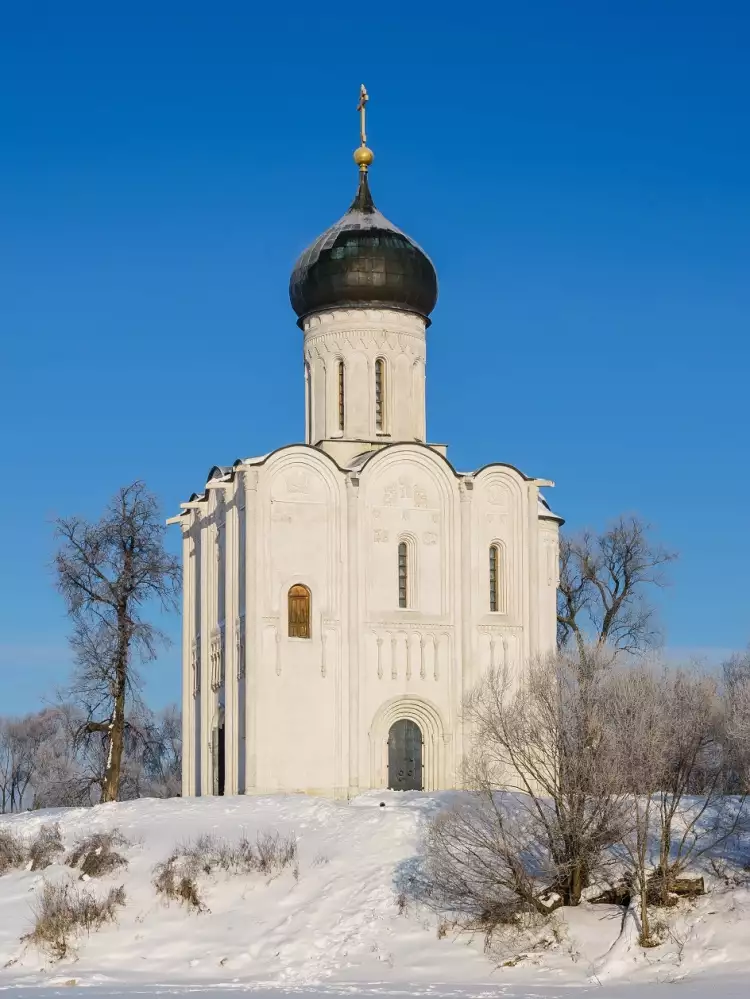 The Art of Ancient Russia. Church of the Intercession on the Nerl, 12th century
The Art of Ancient Russia. Church of the Intercession on the Nerl, 12th century
For Ancient Russian architecture, the predominant feature is the cross-domed layout used in church construction. Wooden window frames were adorned with stained glass, and walls were constructed from square bricks and natural stone. Limestone plaster was used for protection against moisture and temperature fluctuations.
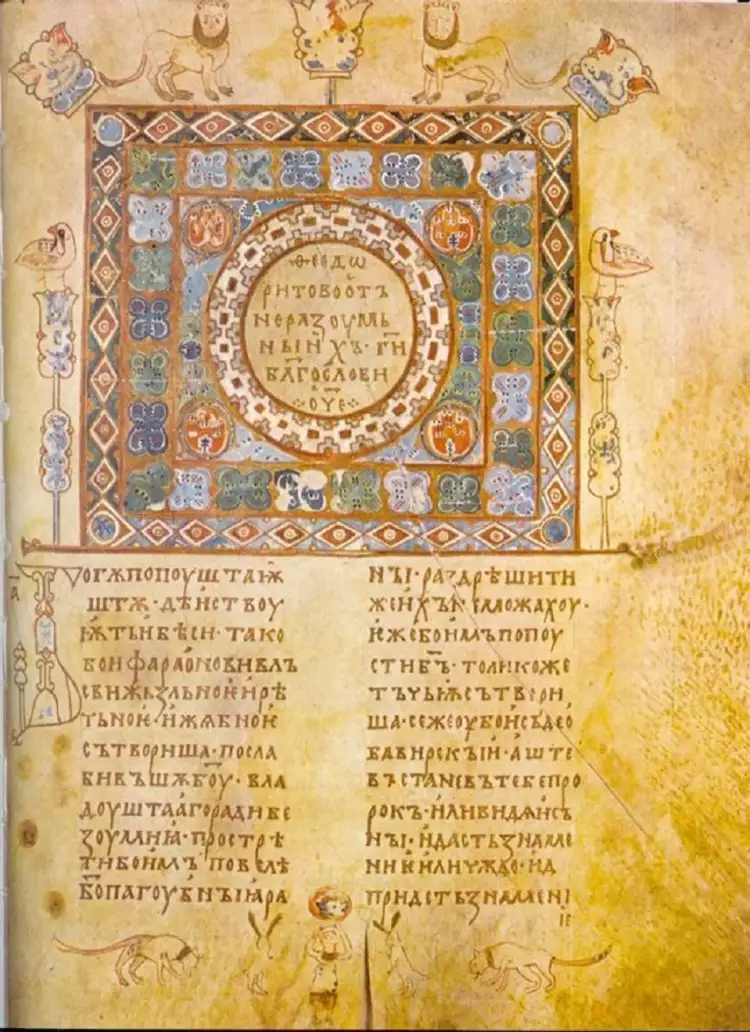 The Art of Ancient Russia. Page from the Izbornik of Svyatoslav, 11th century
The Art of Ancient Russia. Page from the Izbornik of Svyatoslav, 11th century
Wooden and stone sculpture was widespread in pre-Christian Rus'. The primary objects of ancient masters were idols—statues depicting various deities from the pagan pantheon. After the adoption of Christianity, these ancient art relics were widely destroyed as part of the campaign against idolatry.
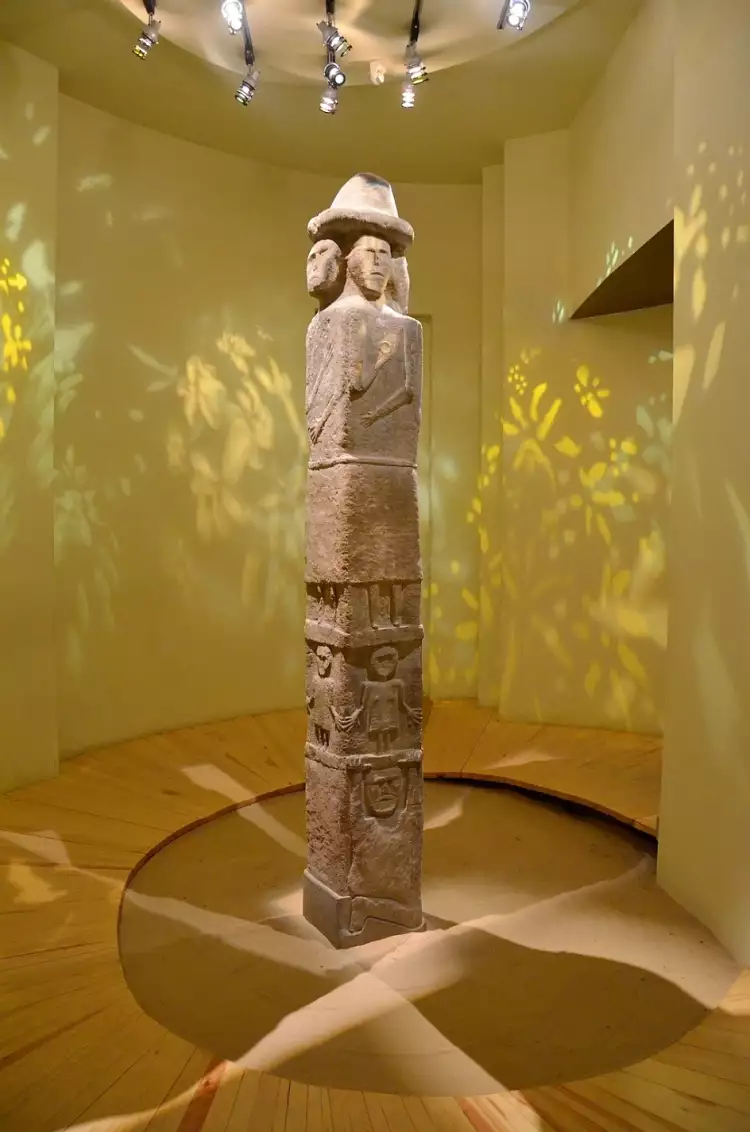 The Art of Ancient Russia. Zbruch idol, 10th century
The Art of Ancient Russia. Zbruch idol, 10th century
Given that sculpture was in an apparent decline in the Byzantine Empire at the beginning of the second millennium AD, this art form hardly developed in Christian Kievan Rus'. The only exceptions were small reliefs created by masters to decorate churches on limestone slabs.
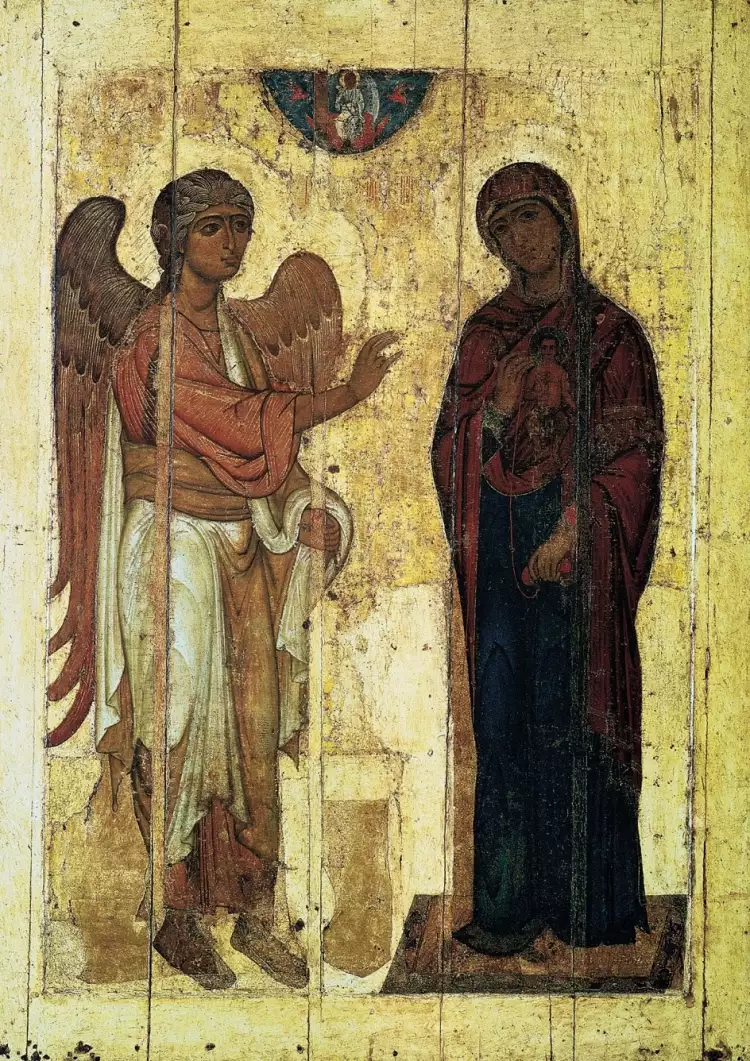 The Art of Ancient Russia. Icon of the Annunciation in Ustyug, 12th century
The Art of Ancient Russia. Icon of the Annunciation in Ustyug, 12th century
Painting in Kievan Rus' experienced a true flourishing during the 10th to 13th centuries. Byzantine master painters who came to the region generously shared their unique secrets of creating icons and fresco paintings with local artists. Images of saints and scenes from sacred texts adorned the interiors of cathedrals, and wooden icons were not only essential for decorating churches but also for numerous religious rituals.
Ancient Russian artists achieved significant success in the field of mosaics. Using colorful pieces of glass (smalti), they created vibrant wall, floor, and ceiling mosaics in churches following the Byzantine model. However, the labor-intensive art of mosaics was almost entirely replaced by the easier technique of fresco painting in the early 12th century.
From the beginning of the 11th century, the art of creating Russian chronicles, a form of book illumination, began to flourish. Monasteries, princely courts, and residences of church hierarchs were the centers of this craft. In addition to texts, scribes adorned parchment with various patterns and colorful illustrations. Alongside historical chronicles, ancient masters also produced unique documents on subjects such as:
- Sacred Christian texts.
- Epic narratives.
- Folkloric folk works.
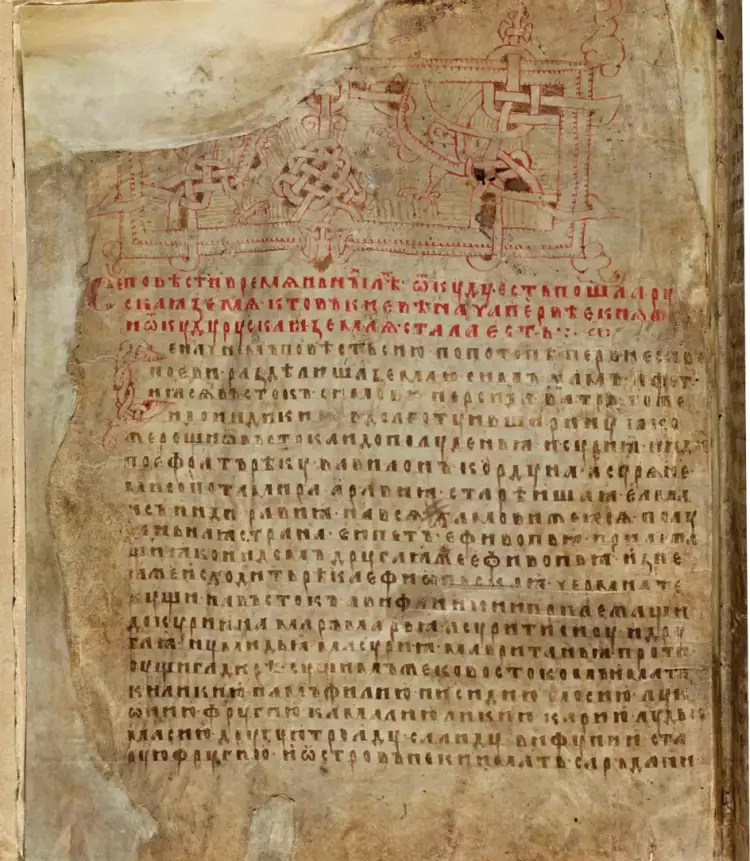 The Art of Ancient Russia. Page from the Laurentian Chronicle, 11th century
The Art of Ancient Russia. Page from the Laurentian Chronicle, 11th century
Ancient Rus' was also renowned for its jewelry craftsmanship. Local artisans masterfully practiced various techniques of metalwork, creating luxury items for the nobility, festive household utensils, clothing accessories, as well as pendants and miniature figurines. Among the unique jewelry items crafted by local masters, kokoshniks stand out – women's headpiece ornaments in the form of elaborate metal pendants.
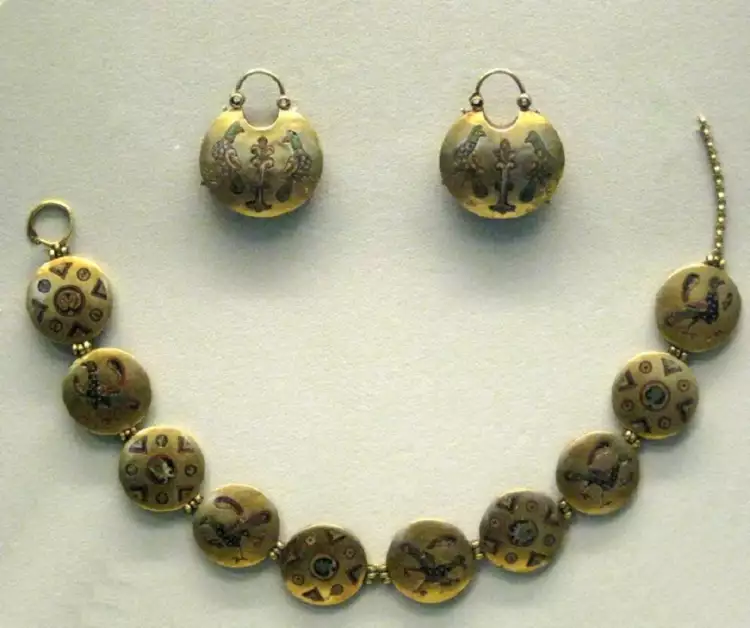 The Art of Ancient Russia. Colts with images of birds on the sides of the tree of life, 12th century
The Art of Ancient Russia. Colts with images of birds on the sides of the tree of life, 12th century
The art of Ancient Rus' continues to be of immense interest to historians and collectors today. Masterpieces of decorative and fine art are sold at art auctions for substantial sums, and unique artifacts from that era unearthed in archaeological excavations adorn the exhibitions of the world's finest museums.
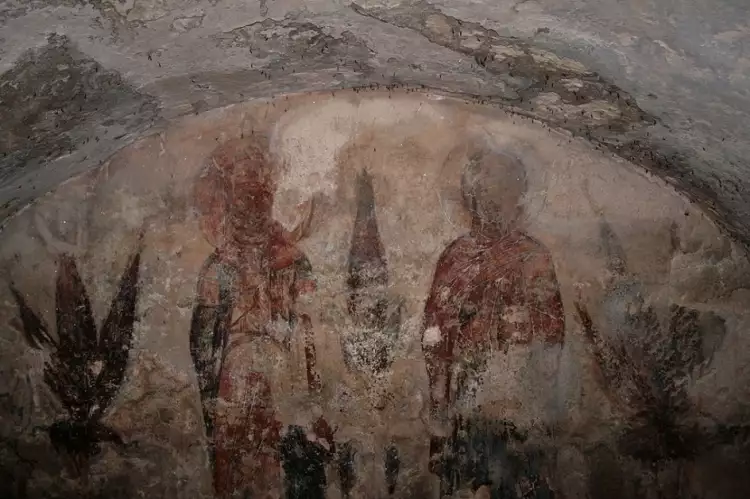
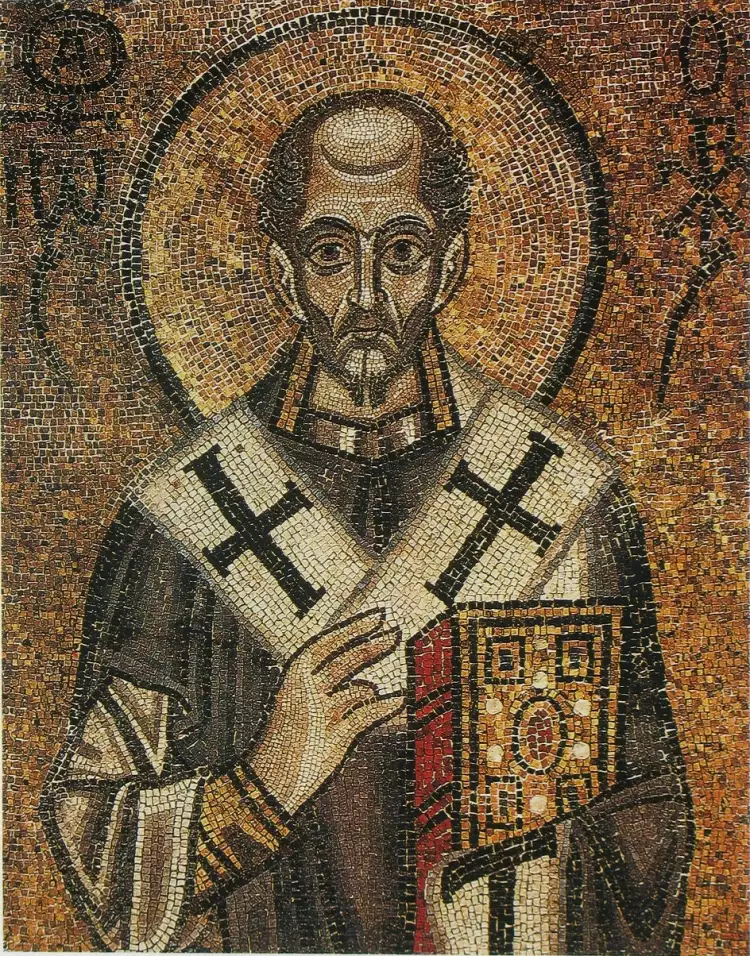
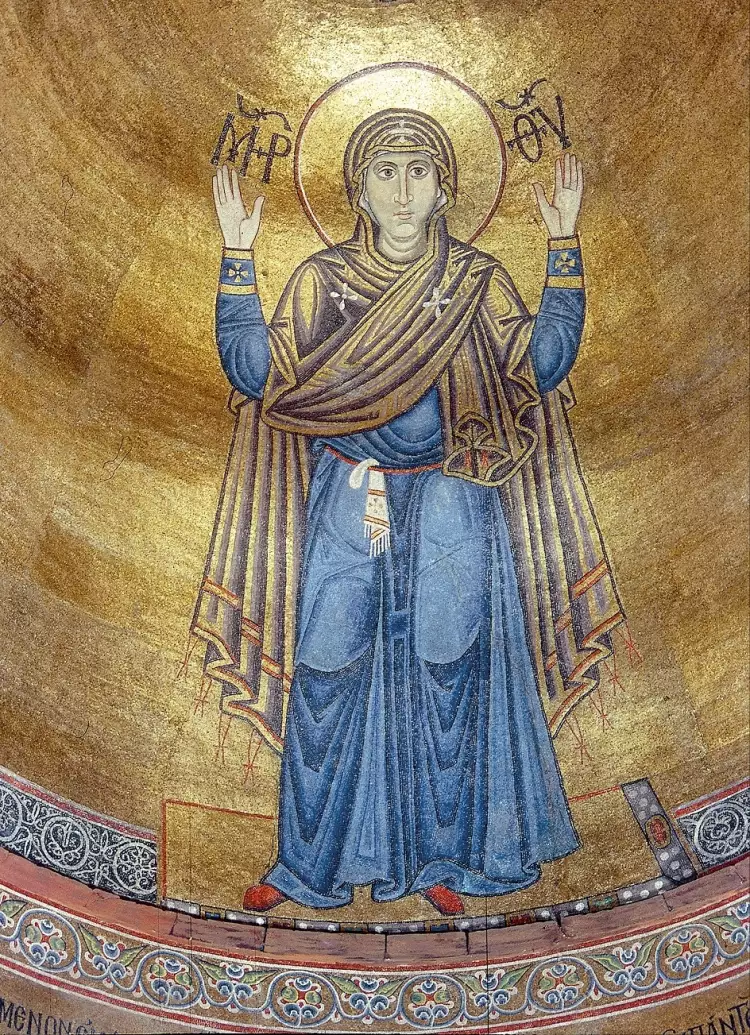
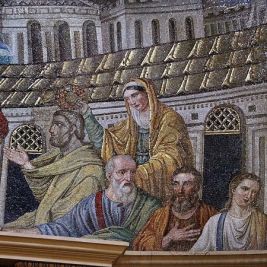 Mosaic - the art of creating a complete picture from many small individual pieces
Mosaic - the art of creating a complete picture from many small individual pieces 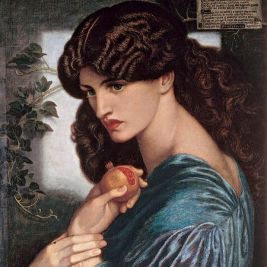 Pre-Raphaelites - the romantics of Victorian England
Pre-Raphaelites - the romantics of Victorian England 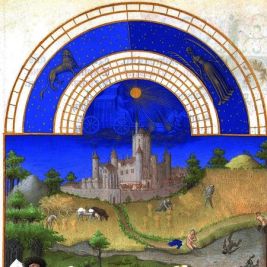 Gothic - the mystical art of the Middle Ages
Gothic - the mystical art of the Middle Ages 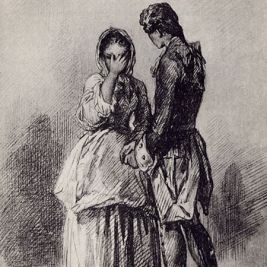 Illustration is a colorful and visually appealing drawing that complements the content of a book
Illustration is a colorful and visually appealing drawing that complements the content of a book  Mannerism - an elegant, pretentious, and ambiguous style of the 16th and 17th centuries
Mannerism - an elegant, pretentious, and ambiguous style of the 16th and 17th centuries 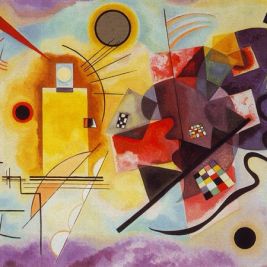 Avant-garde - the vanguard of the bold and resolute. Avant-garde styles in painting
Avant-garde - the vanguard of the bold and resolute. Avant-garde styles in painting 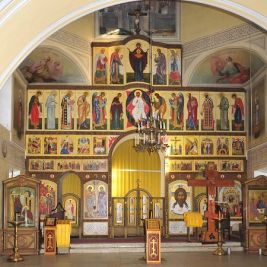 The most famous Orthodox icons
The most famous Orthodox icons 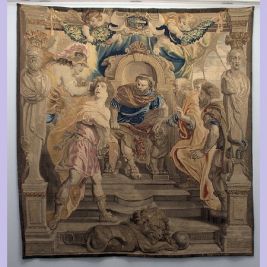 Tapestry - an exquisite handmade carpet with an ancient history
Tapestry - an exquisite handmade carpet with an ancient history 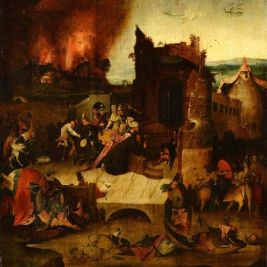 The painting "The Temptation of St. Anthony" by Hieronymus Bosch is a unique and mesmerizing work from the depths of centuries
The painting "The Temptation of St. Anthony" by Hieronymus Bosch is a unique and mesmerizing work from the depths of centuries  Orders of France - from the Middle Ages to the present day
Orders of France - from the Middle Ages to the present day